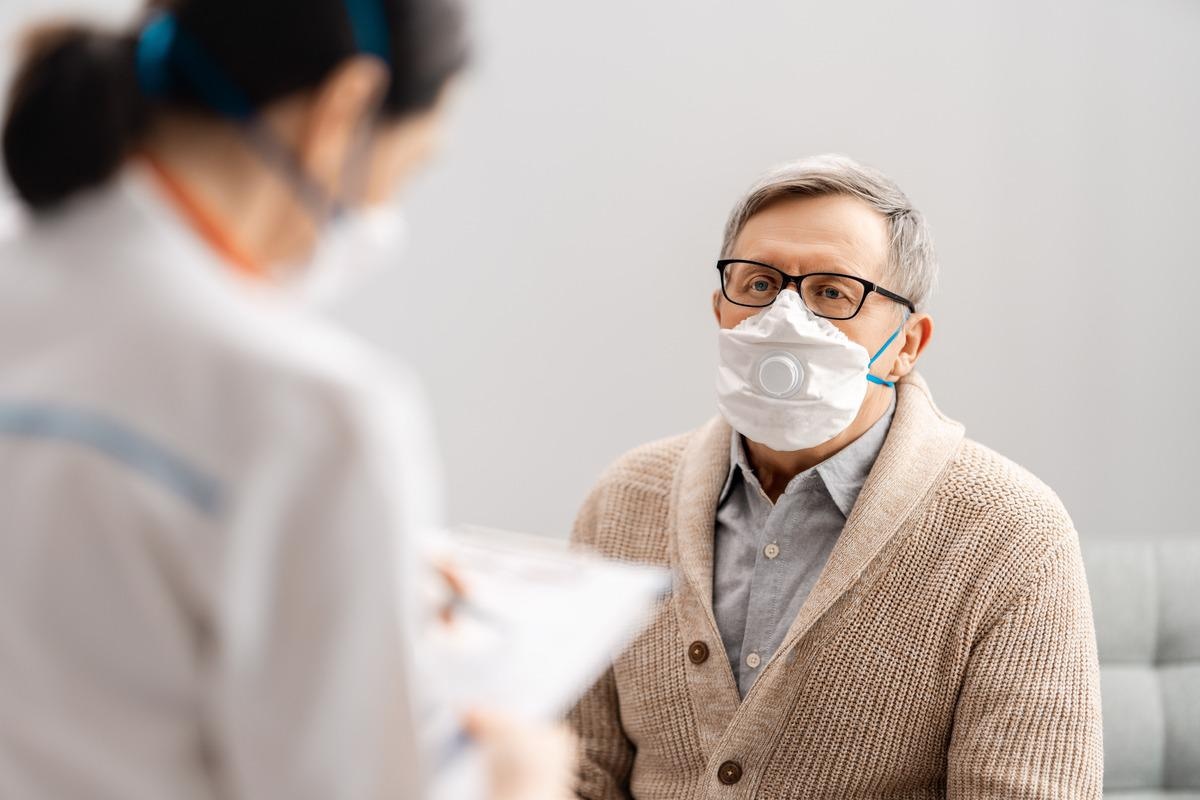The sign and symptoms of the acute sequelae of post severe acute respiratory syndrome coronavirus 2 (SARS-CoV-2) infection may persist beyond 30 days after the infection. The post-acute sequelae or long coronavirus disease (COVID) can affect multiple organ systems. Thus, the natural course of the sequelae post-COVID must be accurately defined. Besides, the severity of the sign and symptoms of this post-COVID sequalae varies among different age groups, the elderly patients being affected more severely than young adult patients.
 Study: CCBYNC Open access Research Risk of persistent and new clinical sequelae among adults aged 65 years and older during the post-acute phase of SARS-CoV-2 infection: retrospective cohort study. Image Credit: Yuganov Konstantin/Shutterstock
Study: CCBYNC Open access Research Risk of persistent and new clinical sequelae among adults aged 65 years and older during the post-acute phase of SARS-CoV-2 infection: retrospective cohort study. Image Credit: Yuganov Konstantin/Shutterstock
A new study published in the British Medical Journal estimated the risk and hazards of persistent and new clinical sequelae of the SARS-CoV-2 infection among elderly patients (above 65 years or older) during the post-acute phase of the infection.
The study
This retrospective cohort study was conducted in the United States in 2020, including elderly patients enrolled in a national health insurance plan. The study population was divided into four groups – the SARS-CoV-2 infection group consisted of individuals who had a history of infection; those without a history of infection formed the 2020 comparison group; historical 2019 comparison group; and another 2017-2019 historical comparison group with individuals with any viral lower respiratory tract illness.
Persistent events in the acute period (from 14 days before 20 days post the index date), the post-acute period (from 21 days after the index date), and new diagnoses were identified. The health status of the participants was also analyzed for the year before the index date and 14 days before the index date. Previous clinical conditions, Charlson and Elixhauser comorbidities, and doctor visits were noted. Any hospital stays and their duration in the previous year were noted. The race, age, sex, and socioeconomic status of the individual was also considered.
Participants were monitored for the persistence of the symptoms or any new diagnosis. Follow-up was done 21 days post the index date.
Results
After exclusions, the final dataset comprised 87,337 patients in the SARS-CoV-2 group matched to 2020 individuals; 88,070 SARS-CoV-2 patients matched to 2019 individuals, and 73,490 SARS-CoV-2 patients matched to individuals in the viral lower respiratory tract illness group.
It was found that individuals infected with SARS-CoV-2 were more likely to be men of the Hispanic race who were older and had a lower socioeconomic background. They also had a history of longer hospitalization in the previous year, had visited many cardiologists, nephrologists, or primary care physicians, and had pre-existing comorbidity.
Individuals in the viral lower respiratory tract group had symptoms similar to SARS-CoV-2 patients, but the former group usually had asthma and were smokers. In the SARS-CoV-2 matched to the 2020 cohort, 68% of the infected individuals did not have any new infection or persistent diagnosis requiring medical attention in the post-acute phase.
Whereas 16% had at least one diagnosis that needed medical support, and the same proportion of individuals had two or more diagnoses requiring medical attention. Exceptions like pulmonary embolism and respiratory failure occurred during the acute phase of the infection and were considered as persistent in the post-acute phase of COVID-19 infection.
The proportion of participants in the SARS-CoV-2 group with at least one sequela was 11% and 7.9% higher than the 2020 comparison and 2019 comparison group, respectively, and 1.4% lower than the viral lower respiratory tract infection group. The risk difference estimated for at least one sequela among hospitalized patients was 23.6% relative to the 2020 comparison group, 19% relative to the 2019 comparison group, and 8.9% relative to the viral lower respiratory tract illness group.
After a SARS-CoV-2 viral infection, an increase in liver abnormalities, respiratory failure, hypertension, mental health disorders, fatigue, and myalgia was reported. People aged 75 years or more had an increased risk for neurological disorders like amnesia, dementia, and encephalopathy. Black people and men were at a higher risk for acute kidney damage and respiratory failure
The 2020 cohort who were hospitalized due to the infection were more predisposed to experience post-infection sequelae like – respiratory, cardiovascular, cerebrovascular, neurological, nephrological, metabolic (diabetes), and mental health disorders.
The study was based on the hypothesis that 32 out of every 100 individuals aged 65 years or more who had COVID-19 infection were diagnosed with at least one new clinical sequela that necessitated medical attention. Hospitalizations for SARS-CoV-2 marked increased risk of persistent and new sequelae. However, patients who did not require hospitalization also faced the same risk in the post-acute phase.
In comparison, it was observed that individuals infected with SARS-CoV-2 had similar post-acute sequelae as those with viral lower respiratory tract illness, excepting the increased risk for respiratory failure, dementia, and fatigue in the former group.
Conclusion
The study confirmed the hypothesis among every 100 individuals aged 65 years or more who had COVID-19 infection, 32 were diagnosed with at least one new clinical sequelae that needed medical attention. Hospitalization increased the risk for post-infection sequelae, while increased risks were also associated with the male gender, black race, and advanced age – 75 years or more.
The findings of this study can aid in the precise definition of COVID-19 sequelae in the elderly population and guide the evaluation and management of the post-acute phase of the disease.